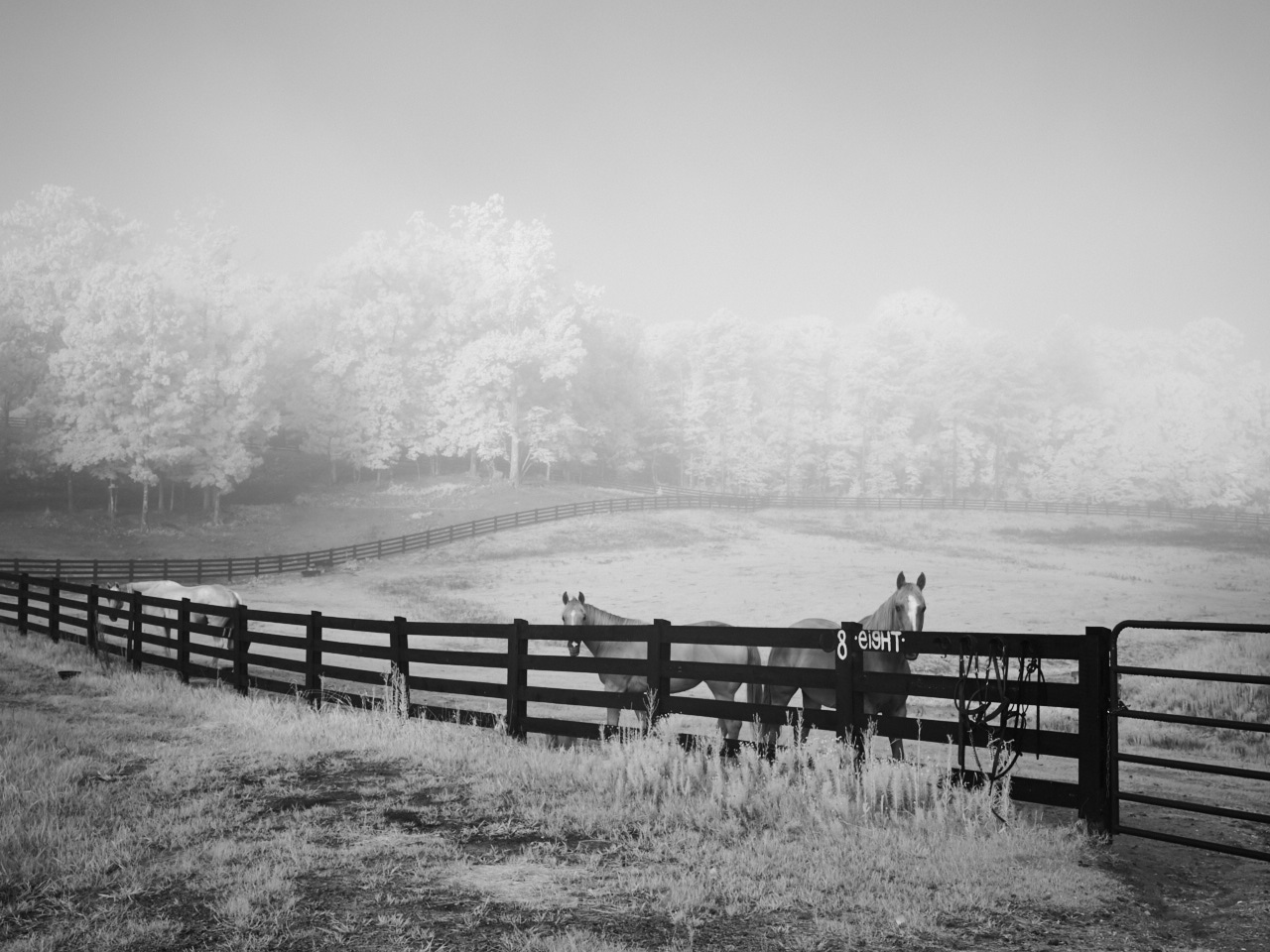
Early morning fog with the Phase One IQ3 100 Achromatic
We received our first Phase One IQ3 100 Achromatic back on Friday. There has been strong anticipation of this back since its release due to all the feature improvements over the previous Achromatic P45+ and IQ260. So I decided to grab it and shoot it for a few hours over the weekend. I strongly believe that you can’t support a product properly unless you have had it in your hands and tested it in the field. By working through the difficulties and making the mistakes ourselves, we can prevent our customers from making those same mistakes when they receive their system. Secondly, at CI, we don’t repeat what manufacturers tell us. We ignore the marketing hyperbole and get to the substance of the products we represent. This means I needed to get my hands dirty…. and my boots muddy…. and be bitten by all the darned insects that like to nibble at you on the farm. So with camera in hand and boots on my feet, I set out to test this new system.
The Quality of an Achromatic Back
Simply stated, the Bayer Filter that helps us image all color photography in digital capture has not been applied to this CMOS 100mp sensor. But really, why is this significant? It is important to understand that all imagery created with these Achromatic backs are pure as they have not been imaged through these individual color filters. When a smooth area of tone is captured by a clean unencumbered sensor, the pixels all capture similar charges for similar tones. This yields a smoother and cleaner tonal quality as compared to that same area imaged through the varying densities of the bayer filter pattern. Is this noticeable? YES. You can zoom into an Achromatic back to 200% and 400% and hardly see any pixilation like you can in a normal digital image. Why? Because there isn’t the change of densities through these filters that give us pixel breakdowns. And this gives us much smoother black and white tonality and the ability to enlarge these 100mp images much more than their color counterparts. I urge you not to trust me on this….. try it for yourself.
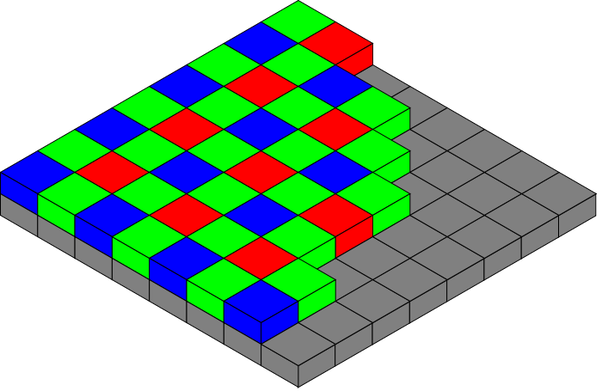
The traditional digital sensor with the Bayer filter pattern applied on its surface.
Sensitivity and Filtration
Before you run out and start shooting an Achromatic digital back, there is one very important lesson to learn. This is not your normal capture device. If you run out the door and just start shooting you will be highly disappointed. You will come back with fuzzy strange looking images and think that “CI must have forgotten to tell me something extremely important here.” It is not just the Bayer pattern that has been removed from this imaging device. The normal Infrared cut filter has also been removed and replaced with a clear glass filter. This means the sensor is extremely sensitive to UV, visible, and IR wavelengths. Why would you get fuzzy images? Because all wavelengths to light radiation focus at different planes. An image that records all of these at once will never be sharp. With all these wavelengths focusing in front of and behind the imaging sensor your results will be frustrating at best.
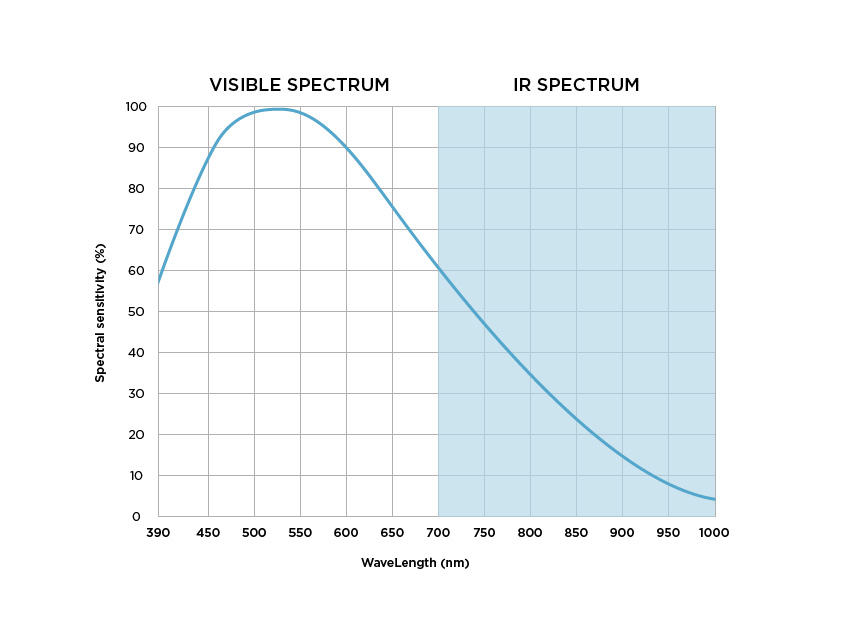
Spectral Sensitivity of the Phase One IQ3 100 Achromatic Back
If it is your intent to shoot normal B&W images, then a filter that would cut the UV and IR and allow the visible light to pass is necessary.
- We recommend the B&W F-Pro 486 UV/IR Cut Filter. We have ordered these for stock from 67mm to 105mm.
- Secondly, I would recommend buying the largest filter size for the lenses in your bag and then “step up” filter rings for the rest. We do NOT stock these. Do not skimp on these. There is nothing more frustrating than not being able to remove a cheap $20 ring from your $400 filter when the light is changing in the field. Heavy duty rings that are textured for grip are highly recommended.
And finally, if you are like me, you love the magic of infrared photography. To achieve the best results in this medium, you will need a filtration that cuts the majority of the visible light but not all of it, and allows the remainder of the IR wavelengths to pass. By allowing some of the visible light, the image will still give you a more pleasing look. Without any visible light, the images will lose details in areas that you might want to keep. I have used the 695 IR cut filter for these tests.
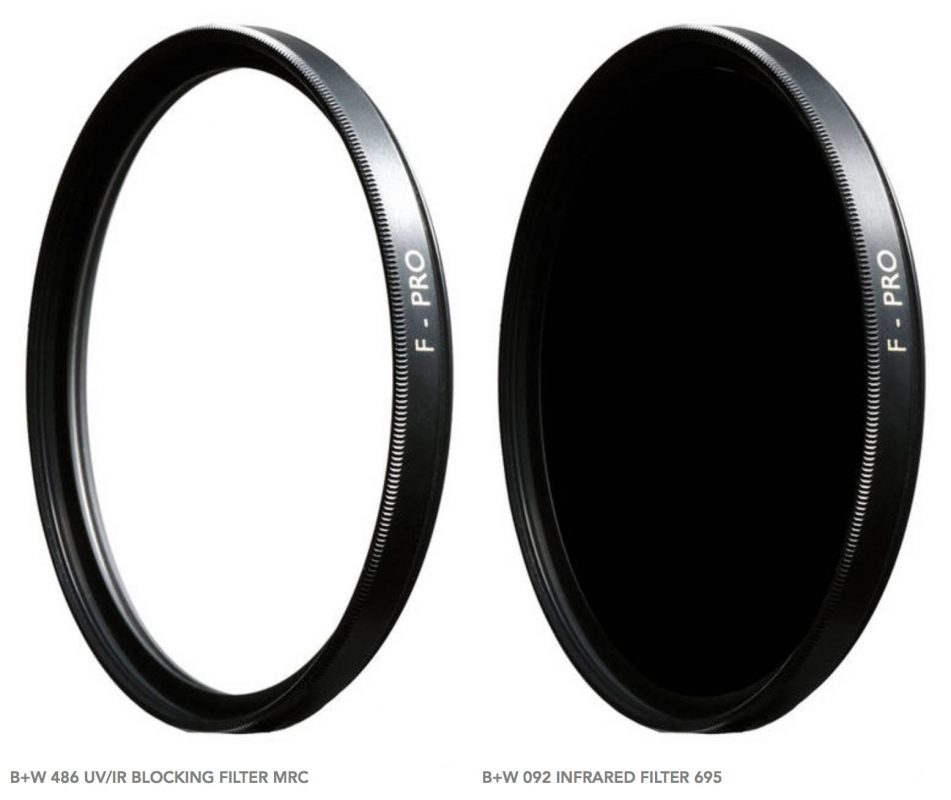
Filter choices and their effect
The absolute beauty of an Achromatic back is the ability to choose to capture a gorgeous black and white image or a stunning Infrared image without moving your camera system. The choice is yours aesthetically at your will, or just capture both and decide which you like later.
For my first image with the IQ3 100 Achromatic, I took a normal scene and captured 3 separate exposures. Importantly, I wanted to be able to see how each cut filter affected each area of the scene. Take a look at the first 2 images below. Notice the subtle differences between the visible spectrum and the IR spectrum.. Notice the “not so subtle” differences as well. The slider will allow you to look at each area over and over again to see it change from one filter to the next.

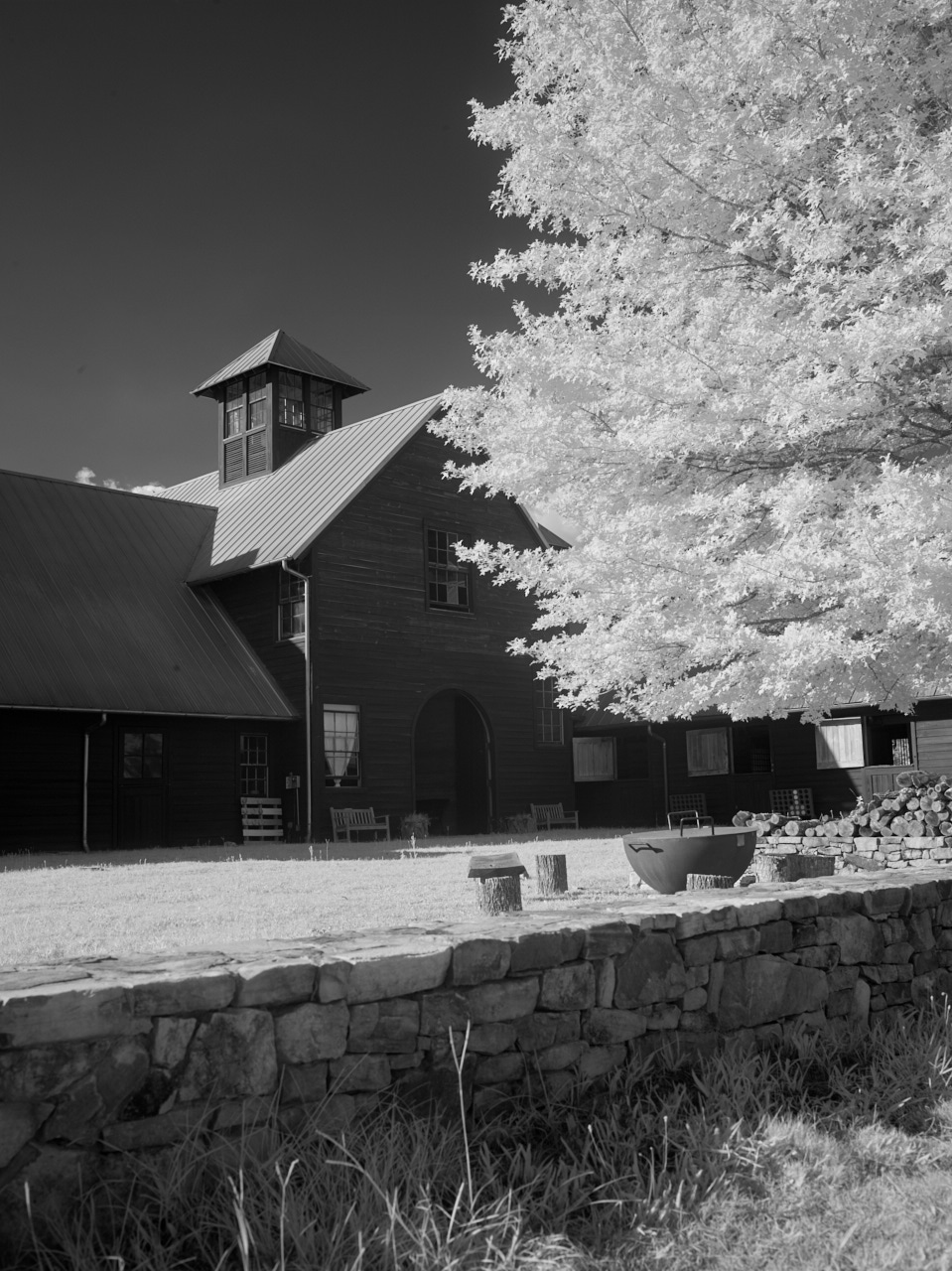
Now, look at these two images. The right hand image illustrates what happens when you cut all visible light from the scene. The 830 cut filter blocks the entire visible spectrum. The sky darkens even more than the normal IR filter. Subject matter that reflects IR are much more vibrant such as the tree leaves. However, areas in the shade go muddy. It is evident that higher cut filters that eliminate visible light might be better suited for scientific or aerial purposes. But for my IR photography, I am going to leave that filter at home for now.
Focusing for IR imaging
Let me first say how happy I was to be able to use live view through the back of the camera to focus for my infrared photography. I excitedly placed the IR cut filter on the system, I turned live view on, and there was my live focusing! I focused on the subject down to the small details. I shot a few images that were beautiful………. and completely unsharp! I missed the focus by a mile! So, a quick lesson with the IQ3 100 Achromatic, Live view is still focusing on visible light not the IR spectrum. Don’t foolishly think you can use it like I did. 🙁
So a quick lesson on Infrared focusing. Have you noticed the IR dot on your Schneider lenses? Did you know its significance? Yes, you guessed it. The small red dot on each lens is for IR focusing.

Can you see that Red dot? Did you just ignore like most have?
Here is the quick way to get your focus close when shooting IR.
- When your subject is at or approaching infinity, switch to manual focusing and move your infinity mark to the red dot.
- At other times, use your AF to get focus for the visible spectrum, switch to manual focusing, and then move your existing focus point to the red dot. IE: If your lens shows 10′ as your focus distance, move the 10′ mark to the red dot.
Now, this is not always perfect. The IR offset from the visible spectrum is not a linear scale. But it gets you there close and fast. Always check your focus on the digital back after shooting in IR and make sure you are happy with your focal point placement.
Things you need
Details
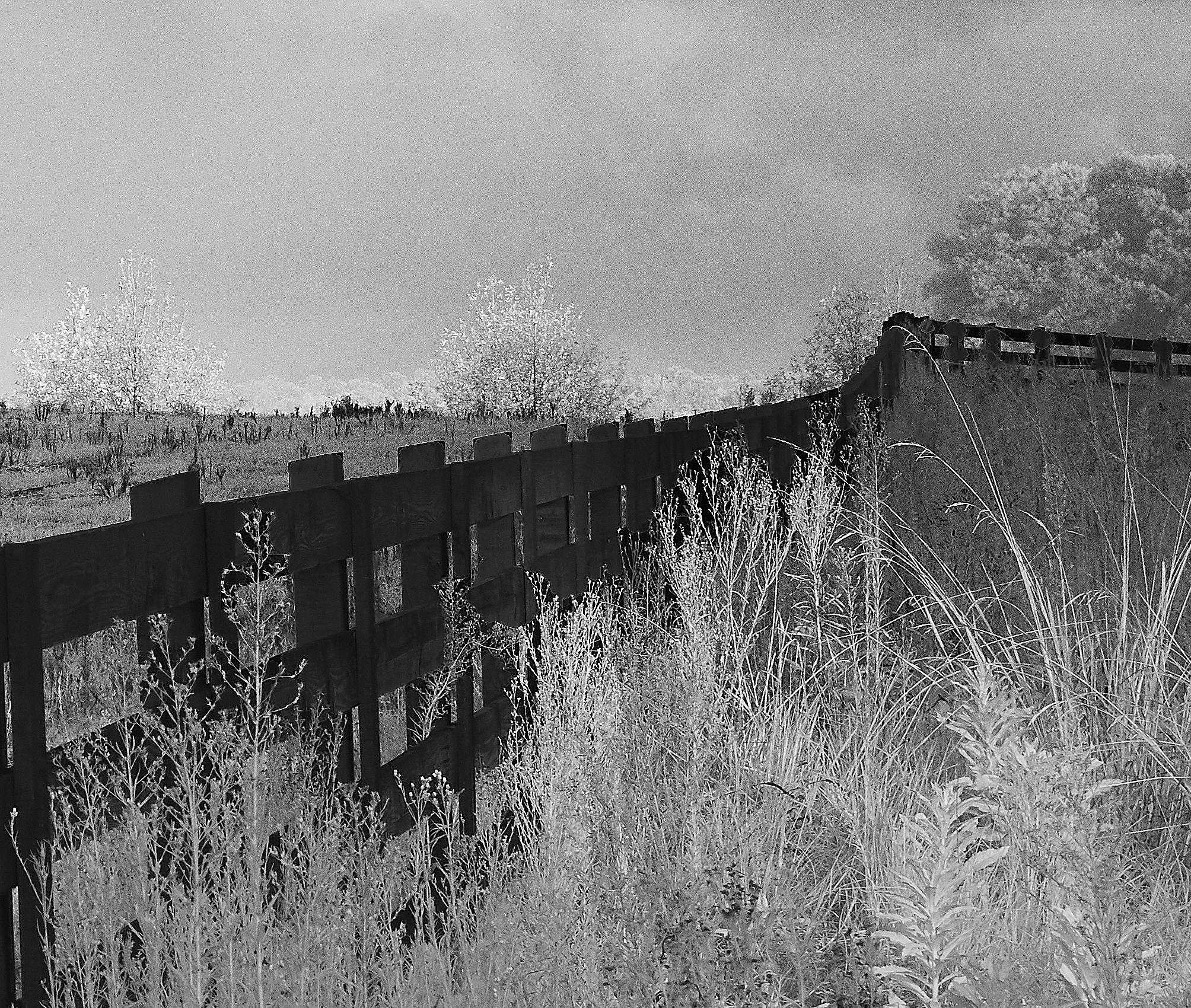
100% crop

100% crop
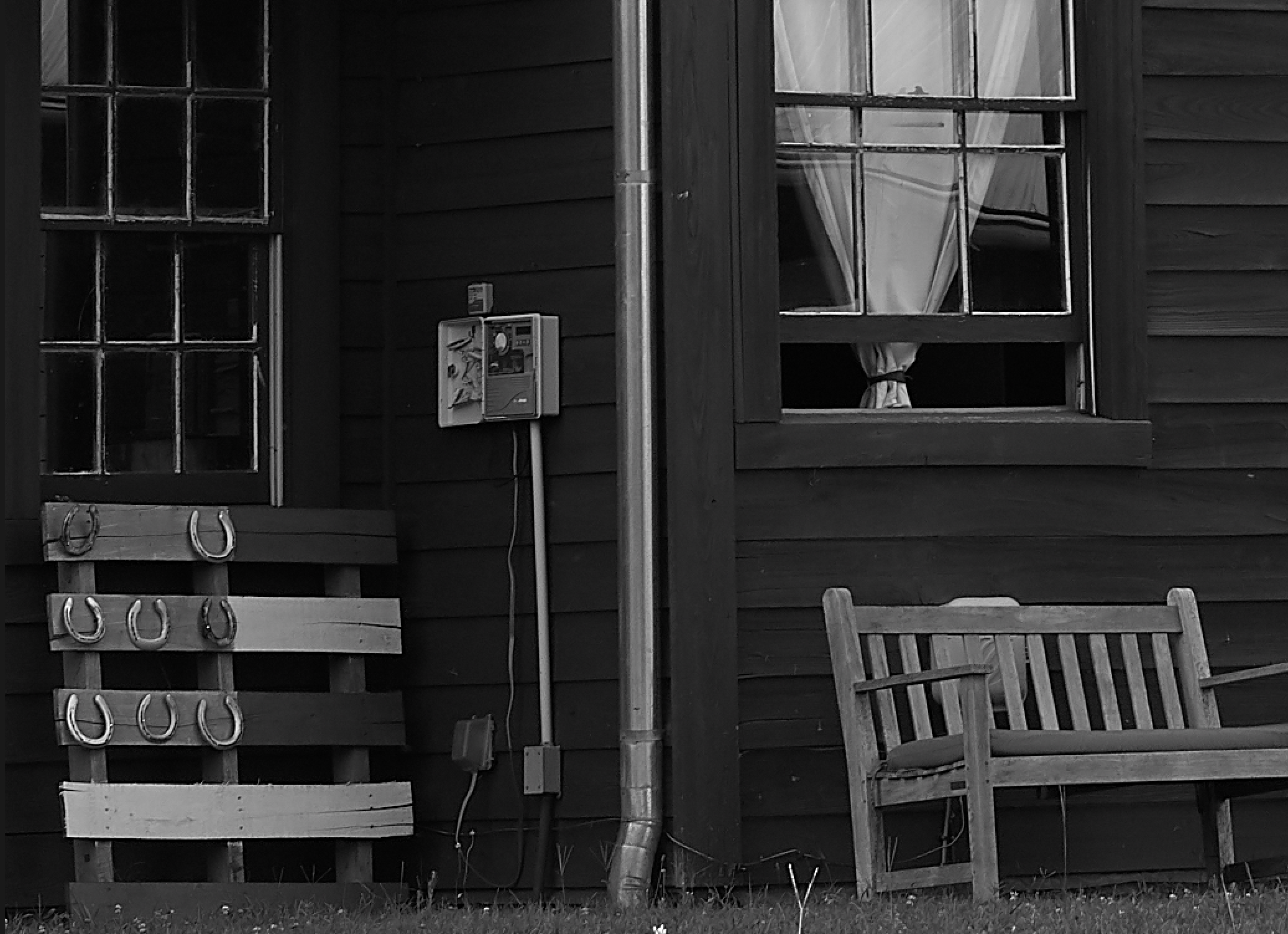
200% crop of a pure B&W capture
What motivates you?
I have to be honest. The camera I keep on me most of the time is my Leica M with a Noctilux f/.95 50mm lens. This is my easy “go to” system and “bang along” camera. The Phase System is pulled out when I go to somewhere that is gorgeous and exotic. This is mainly to do with weight and size. However, all this has changed with this camera. The magic of IR photography brings me back to developing prints in the lab. Remember watching the tray rock back and forth under a dimly red lit room until an image mysteriously appears through the chemistry in the tray? That was magical. And this is how I feel about setting up a shot, putting on the IR filter, and pressing the shutter with this system. The results are so different and more compelling than the visual scene in front of me. There is something tremendously special about 100mp of clean IR files with sharp results. Sharpness that I struggled with when I shot IR film. I now want an IQ3 100 Achromatic in my car and available when I see that dramatic sky or that creeping kudzu. I want it available when the scene appears in front of me and I wonder how incredible the IR results would yield. What motivates you to shoot? Do you have that love of something to get you going again? I am honestly motivated to go shoot for myself, for the joy of it again. And I can say, I have not felt this way in years.

Waiting for the sky to change…..